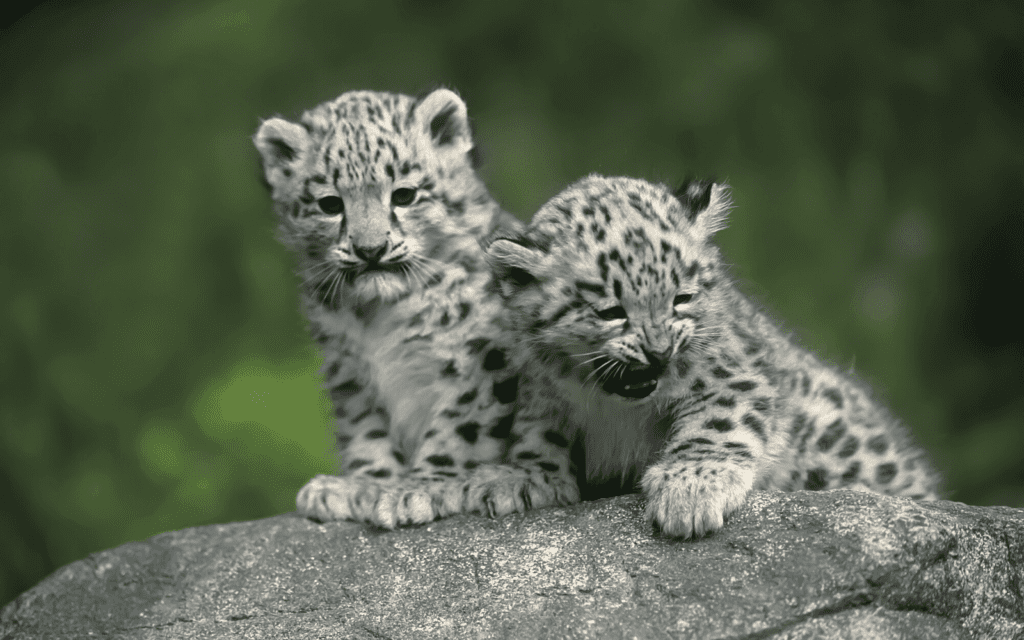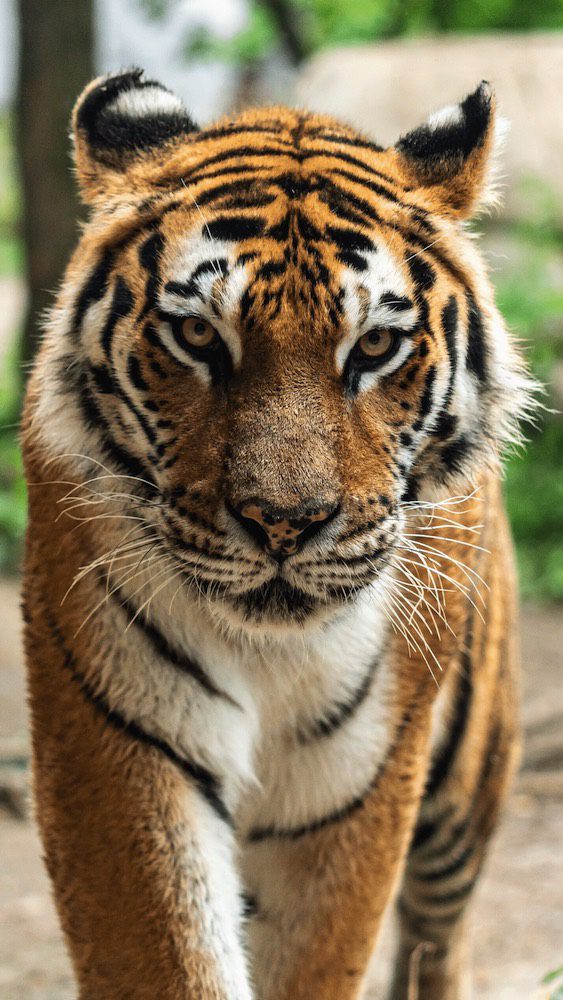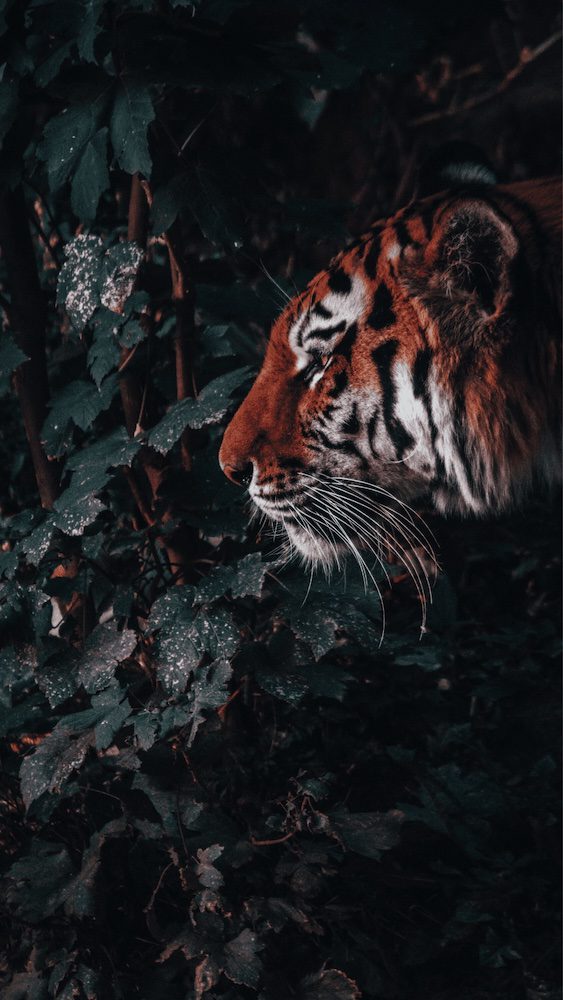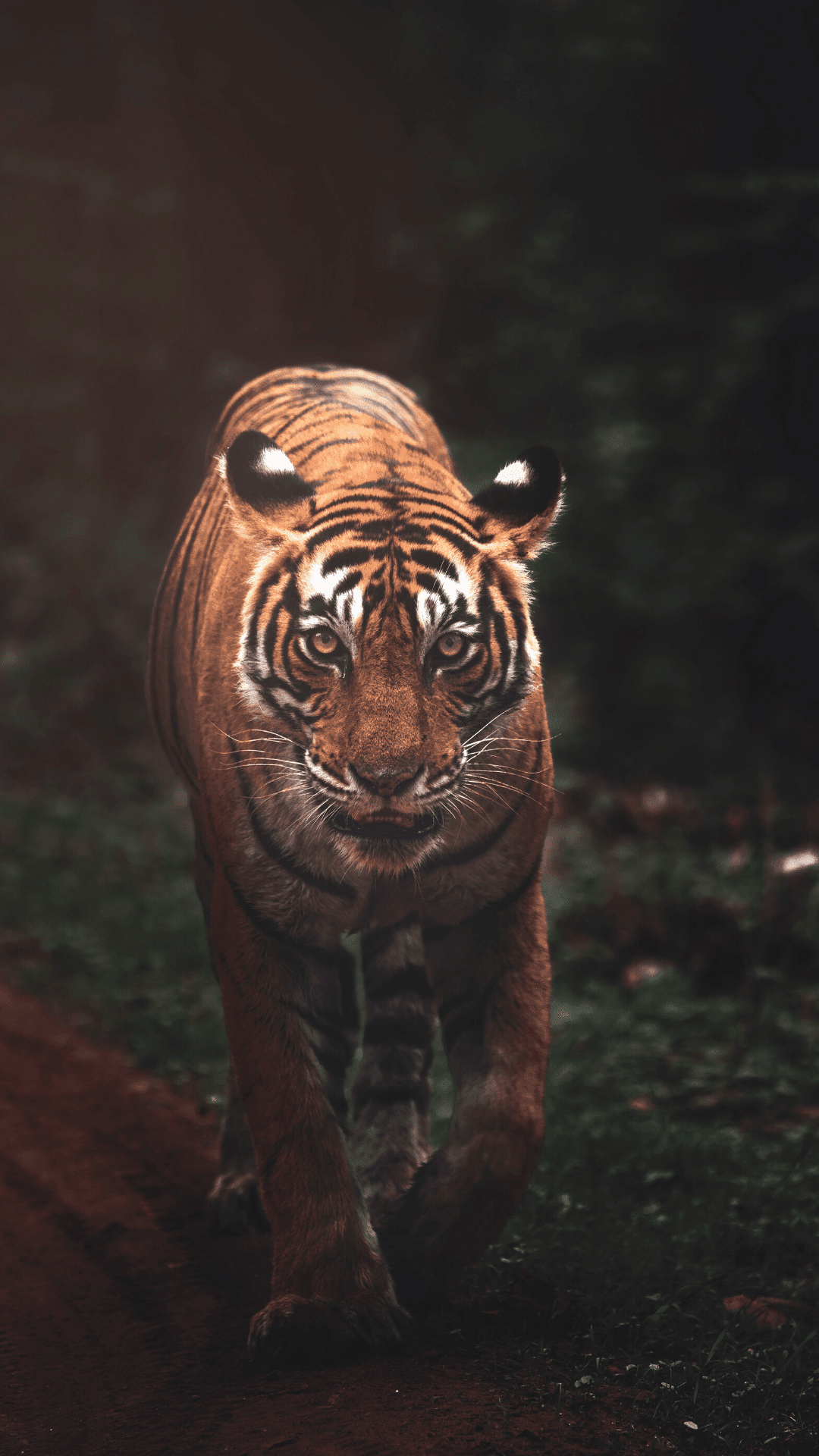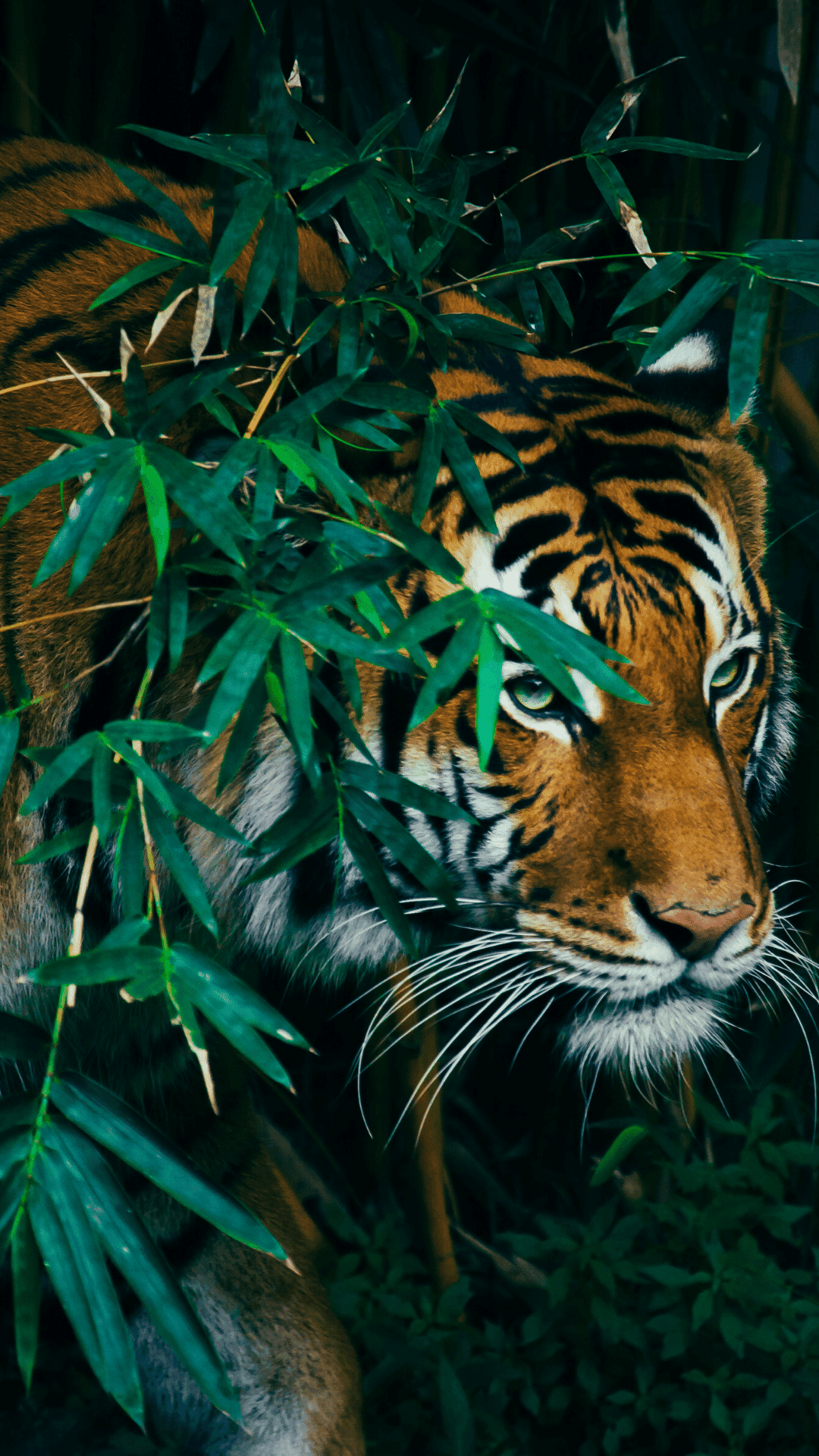Feature Image © skaman306 – stock.adobe.com
YOUR ULTIMATE WILDLIFE SAFARI
On the Tiger Trail
Tigers of My Childhood
As a young girl, the onset of summer in the North and North East of India was eagerly awaited. Every year we would take a three-day jaunt to one of the many tiger reserves (India has around 50 of them!), and this was a highlight in my calendar.
In the heat, the elusive cats would pad silently on giant feet to bathe in trickling waterfalls and lap at cool pools of water. As the parks never had very clearly fenced boundaries and the tigers are wanderers it was tricky to spot them. Finding a tiger in search of shade and a drink felt like a triumph.
Tigers have their own code of honor, and they do not bother themselves with manmade rules, regulations, and borders.
Of course, this inevitably resulted in unplanned encounters. One of my most vivid early memories began with a vague recollection of wandering off from our safari car. The final few moments of my little walk continue to pull sharply into focus. Across all the intervening years, I still sense the absolute power of the majestic cat as we locked eyes for a small eternity before I was scooped to safety by our driver.
All the villages would have watchmen taking turns to watch their livestock. A hungry and thirsty tiger is a determined tiger and so, the mornings would always be alive with stories of lost and damaged property, a slain cow, a disappeared goat and in some cases a dead tiger.
What began as a primal instinct to protect evolved over time to include the spoils of hunting. As human greed grew, the tiger population withered.
The history of humans and tigers co-habiting can be traced back to the Indus valley 5000 years ago. The Mohenjo-Daro and Harappa included tigers in the culture of their civilization, and since then almost every religion on earth has tied religious symbolism to this majestic creature. In Hinduism, Goddess Durga is depicted riding a tigress in the battle. In Buddhism, it symbolizes anger, the Asian cultures have objects with tigers in the form of amulets, they are considered as protectors of the good and enemy of evil. Tigers abound throughout both mythology and western literature. From Shere Khan to Hobbes, humans are drawn to the beauty, strength and individual nature of tigers.
It is a testament to the power of our avarice that these creatures who were so integral to my childhood might not share the planet with my own grandchildren.
Each time I hear of a poaching incident, I remember the poem ‘The Tyger’ by William Blake
‘When the stars threw down their spears
And water’d heaven with their tears:
Did he smile his work to see?
Did he who made the Lamb make thee?
Did he who made the Lamb make thee?’
If Blake were to write his poem today, would he cast Tigers as lambs and title the poem ‘The Human’?
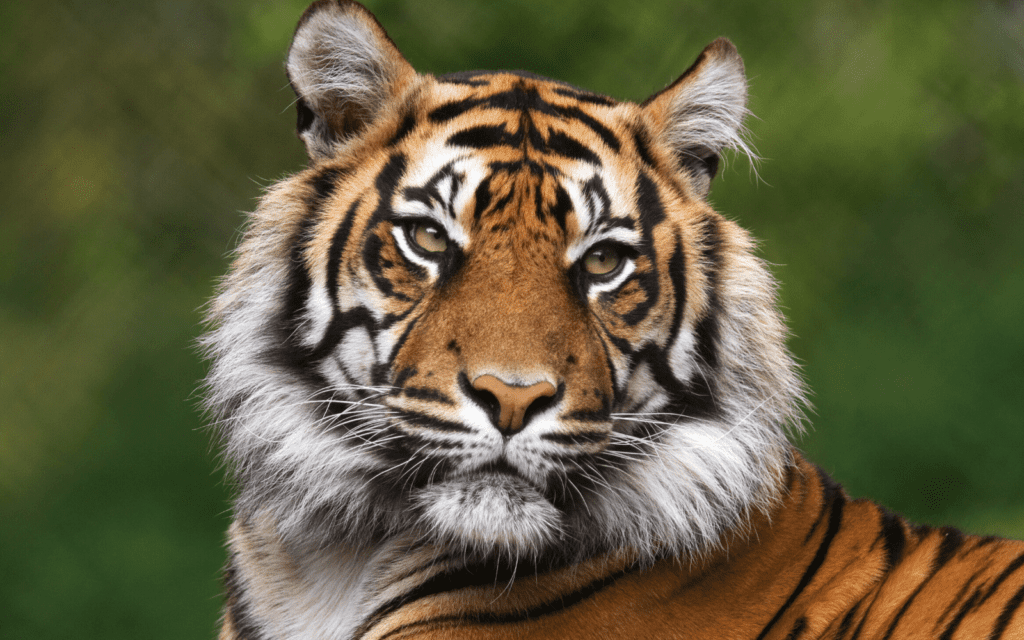 Image © bertie10 – stock.adobe.com
Image © bertie10 – stock.adobe.com
A Rothschild Safaris Tiger Safari in India
We work hard to find the most dedicated operators and conservationists to help us plan our tiger safaris in India. To manage expectations, ensure that there is ample time to enjoy an immersive experience and to maximize every chance to see the poetry in motion that is a tiger sighting, we engage the foremost naturalists, scientists and lead guides in the business.
Image © Mike Marrah, Benjamin Raffetseder – unsplash.com
The Tiger Sightings Window
There is no way around the fact that there is only one boss on a tiger safari. A tiger takes direction from no-one, and it will always have the final say on where, when, how, and if any sighting takes place.
Our job is to make sure you are as comfortable as possible on the tiger trail while you await your audience with jungle royalty. This means steering clear of the monsoon season (July to October) and out of the extreme heat that envelops the jungles from March until the monsoons arrive.
To increase your tiger odds, we always suggest allowing for three or four days on safari.
Living Your Best Tiger Safari Life
You dream of seeing a tiger. We will stack the odds in your favour… and then we will remember that tigers walk alone, that tigers are secretive, that tigers are masters of camouflage and we will prepare you for an incredibly satisfying and life-changing safari in the jungle.
While our excellent guides have their ears on the jungle drums and work hard to find your tiger, they will also introduce you to other members of the jungle court. The exotic Indian wilderness is filled with other animals of Asia like leopards, bears, elephants, buffalo, rhino, wolves, impressive herds of chital, Samar deer and nilgai as well as incredible birds, butterflies, and monkeys.
Expect to experience the extraordinary.
Image © Keyur Nandaniya, Sherrod Photography – stock.adobe.com
Where We Court Tigers
The five surviving subspecies of wild tigers that exist in the wild can be found in India, Nepal, China, Russia, Bhutan, Myanmar, Cambodia, Laos, Vietnam, Thailand, Sumatra (Indonesia) and Malaysia.
While the Indian/ Bengal tiger can be found in India, Nepal, Bhutan, and Bangladesh, they rule vast swathes of India. Today there are 39 Tiger Reserves throughout the 19 Indian states where tigers roam.
Rajasthan
Ranthambore National Park
One of India’s largest and most famous parks Ranthambore is the darling of wildlife photography. Prince Philip shot an Asian tiger here in the 1960s, but the cats have been protected from hunters through Project Tiger since 1973. At the time only 14-18 tigers survived, and in early 2018 a survey found 67 tigers living in Ranthambore. The tigers are used to jeeps and people and may even spoil visitors with a rare and unusual treat of watching them hunt.
Other Wildlife includes:
Leopards, jungle cats, sloth bears, hyenas, Indian foxes, jackals, and crocodiles.
Also see:
Three lakes and a large number of ancient ruins lie in wait throughout the park.
Visit in April or May
Madhya Pradesh
Bandhavgarh National Park
A wildlife sanctuary at the core of the Bandhavgarh Tiger Reserve in Madhya Pradesh that is home to the highest density of tigers. It was here that the last wild tiger was captured by Maharaja Martand Singh of Rewa in 1951. The saying goes that you are lucky to spot a tiger in every park in India other than Bandhavgarh… where it is unlucky NOT to spot a tiger.
Other Wildlife includes:
Chital deer, sambar deer, barking deer, macaques, langurs, wild boar, nilgai antelope, four-horned antelope, Indian Bison, wild dog, leopard, blue bull, Indian fox, jackal, wolves and sloth bears.
Also see:
Bandhavgarh Fort, which is perched atop a 600-meter-high cliff overlooking the Vidhyan Mountains.
Visit from April to June.
Kanha National Park
A magnificently expansive tiger reserve with expansive grassy meadows surrounded by sal forests. The perfect playground for Bengal Tigers, you may be excused for thinking you have landed inside a Rudyard Kipling story.
Other Wildlife includes:
hard-ground barasingha, an endangered species of deer only found here. Other animals regularly sighted include chital, gaur, three-striped palm squirrel, common langur, jackal, wild pig, blackbuck, striped hyena, leopard, mouse deer, porcupine, chinkara, sambar, Indian bison, and ant-eating pangolin. Also, keep an eye out for a significant number of birds ranging from peacocks to vultures.
Also see:
As Rothschild Safaris is passionate about avoiding all interactions that may harm wild animals, we do not recommend either elephant safaris or tiger shows in Kanha.
Instead, visit one of India’s most famous elephants who lives a pampered life in Kipling Camp and may allow you to assist her as she bathes in the river at 3 in the afternoon every day.
Visit from April to June
Pench
Lesser known, this unsung beauty is home to around 50 tigers and attracts fewer tourists as the dense forest makes it more challenging to spot cats.
Other Wildlife includes:
Chital, Jungle Cat, Wolf, Indian Leopard, Gaur, Four-horned Antelope, Sloth Bear, and much other wildlife. Also, a great variety of birds like Crow Pheasant, Peafowl, Pintail, Lesser Whistling Teal, Indian Roller, Wagtail, Munia, Waterfowl, Blue Kingfisher, Crimson-breasted Barbet, Red-Vented Bulbul are found here.
Also see:
Visit the little hamlet of Pachdhar in Seoni that is known for its community of potters. Watch the Kumhaars create incredible items like matkis (earthen vessels), gullak (piggy banks), diyas (or lamps), Kulhar (chai glasses) & more from organic material.
Visit from March to May
Satpura National Park
Satpura is relatively new (established in 1981) and only allows 12 vehicles at any one time.
Other wildlife includes:
hyena, leopards, gaur, sambar, chital, barking deer, chin Kara, mouse deer, wild boars, wild dogs, bears, blackbucks, foxes, porcupines and flying squirrel.
Also see
Satpura is the only park that allows guests to trek on foot and in summer tigers may be found taking a dip in the Sonbhadra River.
Visit in April or May
Uttarakhand State
Jim Corbett National Park
Established in 1936 the park was dedicated to hunter-turned-conservationist Jim Corbett in the 1950s. It lies at the feet of the Himalayas, and the terrain is correspondingly varied.
Other Wildlife includes:
Spot leopards, jungle cats, fishing cats, sloth bears, jackals, Bharal, goral, Himalayan tahr, serow, chital, sambal and barking deer.
Also see:
Corbett is known as an elephant park with a good chance of spotting wild elephants on the Ramganga River.
Visit from March to June (do prepare for dusty roads)
Tiger Conservation
What is a tiger?
A big cat —between 8.5 and 10 feet (2.6 and 3 m) from the tip of its nose to the end of its tail and weighing between 300 and 620 pounds (135-280 kgs) — with an orange coat that is patterned with broad black stripes. Tigers have black ears with a winking white spot on the back, powerful forepaws, and a long-banded tail.
They live between 14 and 16 years in the wild.
Extinct tigers
The three subspecies of tigers that became extinct in the past century are:
1940 Bali Tiger (Panthera tigris balica)
1970 Central Asian Tiger (Panthera tigris virgata) —this tiger might belong to the same sub-species as the Siberian tiger
1980 Javan Tiger (Panthera tigris sondaica)
1990 South China Tiger
 Image © ondrejprosicky – stock.adobe.com
Image © ondrejprosicky – stock.adobe.com
Extant tigers
Indian Tiger or Royal Bengal Tiger (Panthera tigris tigris)
India, Nepal, Bhutan and Bangladesh;
Indo-Chinese tiger (Panthera tigris corbetti)
Thailand and Peninsular Malaysia, Myanmar, Southern China, Cambodia, Laos and Vietnam;
Siberian or Amur Tiger (Panthera tigris altaica)
far east Russia;
Sumatran Tiger (Panthera tigris sumatrae)
The Indonesian island of Sumatra;
South China Tiger (Panthera tigris amoyensis) found in China.
Tigers found in Peninsular Malaysia are a separate subspecies Panthera tigris jacksoni.
There are more tigers alive in captivity in the United States as wild tigers on the entire planet.
Tigers are vulnerable to extinction and spotting a wild tiger is an incredible privilege and an emotional experience that is difficult to describe in words.
Threats to the Wild Tiger’s Survival
Relentless poaching for use in traditional Chinese medicine
Retaliatory killings
Habitat loss
The tourism industry remains a force for change, particularly as it places a premium on the preservation of the tiger’s habitat.
Snow Leopards
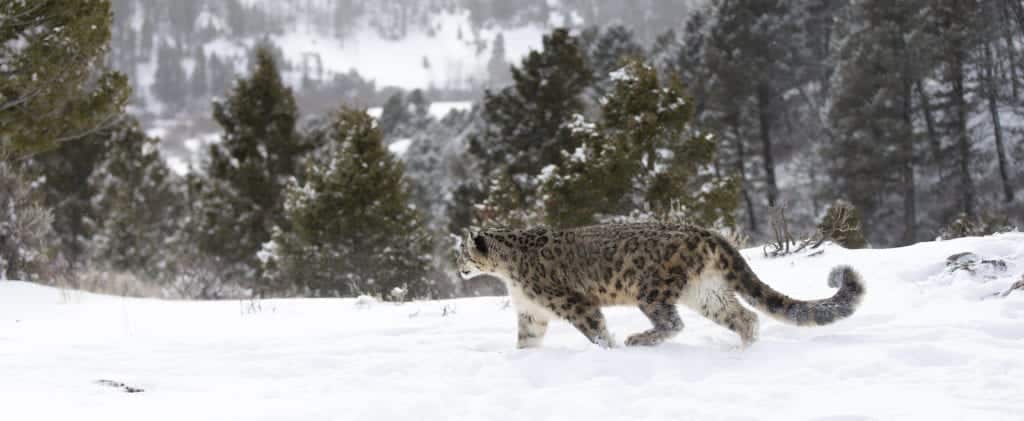
Image © Dennis Donohue – stock.adobe.com
Chasing the Chimera
When you dream of seeing a Snow Leopard, you will no doubt have spotted a vital clue in the name. A trek to Hemis National Park in the dead of winter is a fantasy that will include frozen feet and require a touch of foolhardy determination.
The Snow Leopard is so elusive that a couple of weeks hiking cold and rugged terrain may result in a mere momentary twitch of an ear, at such a great distance you won’t be entirely sure you did not merely witness a hare.
I knew all of this, and I still boarded the flight to Leh.
The reality of a snow leopard safari sets in very soon after you land and drive to Hemis National park… there is the sheer height with the accompanying chance of altitude sickness and a four-hour hike on moderate inclines with luggage to contemplate on your way to the village of Rumbak.
I may be fearless, but I always err on the side of common sense and opted for riding a mule to the top instead of walking.
The camps and lodgings on a snow leopard trek lean towards the more basic (consider the extremely remote and rugged location), but the food and hospitality are beyond incredible.
As an urban dweller, I know to move when I hear someone honking. The response is automatic. The environment on the roof of the world requires an entirely different set of reactions. Nothing can prepare you for the long hours where you wait to spot a snow leopard. When you come this far, your guide had better be the best in the business.
My guide filled my experience with local folklore and rich insights into the full range of wildlife that share the Himalayas with the snow leopard. He spotted ibex, wolf, blue sheep, Tibetan hares, and splendid migratory birds. We hiked next to monasteries, gasped at soaring cliffs and watched stunning backdrops appear through the smoke of our condensing breath.
In reality, my snow leopard trek was free of all signs of any snow leopard. Then, on the very last day, as we packed up to hike down the village, I was clinging to the last vestige of hope that we would spot this cat who the locals loving call as the grey ghost.
As I was sipping my tea, my guide mounted the telescope on the stand and did a quick survey. He summoned me with urgent hand gestures, his entire being signaling urgency and his eyes glued to the scope lenses.
I did not dare to think it. I did not dare to breathe.
As soon as my eyes focused the prize was clear. The snow leopard was walking directly towards me, Pieter Matthiessen’s “uncompromising yellow eyes, wired into the depths of its unfathomable spirit” gazing right into my soul, a catwalk of snow and heartbreakingly blue sky surrounding him, tail swaying with the joy of having found an Ibex for dinner.
Take a number, Mr. Snow Leopard, I almost said out loud. If there were any prizes for elation on that mountain that day, I was first in line.
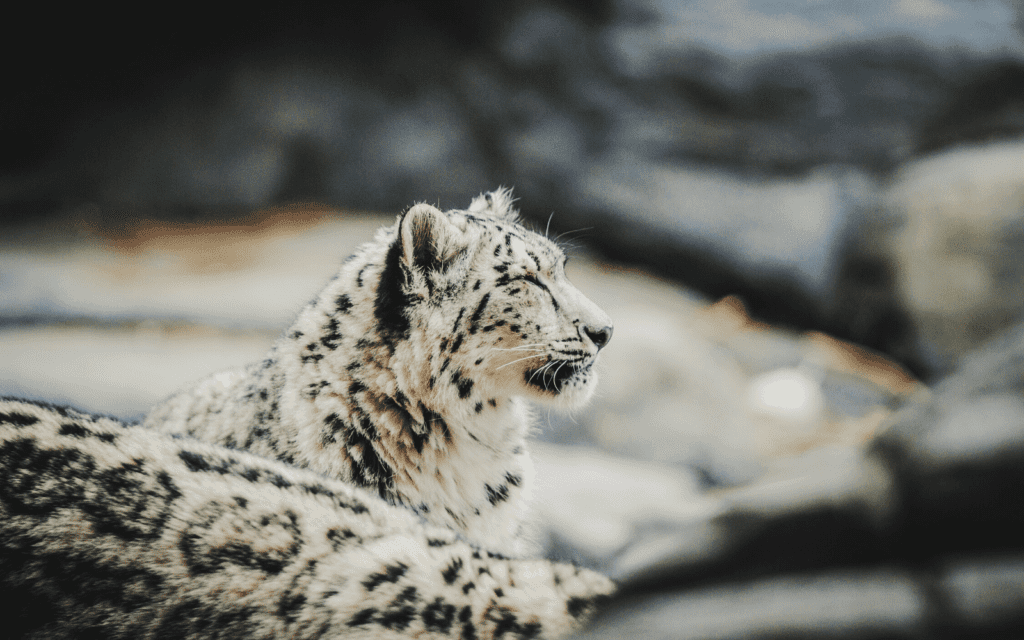 Image © HelenaLopes – unsplash.com
Image © HelenaLopes – unsplash.com
A Rothschild Safaris Snow Leopard Safari
Hunting a snow leopard is an activity that strays at speed into territory that does not allow for safari lodges, couples massages at sundown or guaranteed sightings. But this does not mean that delights are not waiting to surprise you in the mountains. Incredible guides, fascinating culture, and opportunities to make an impact on snow leopard conservation magically turn this experience into one of the most satisfying wildlife safaris of a lifetime.
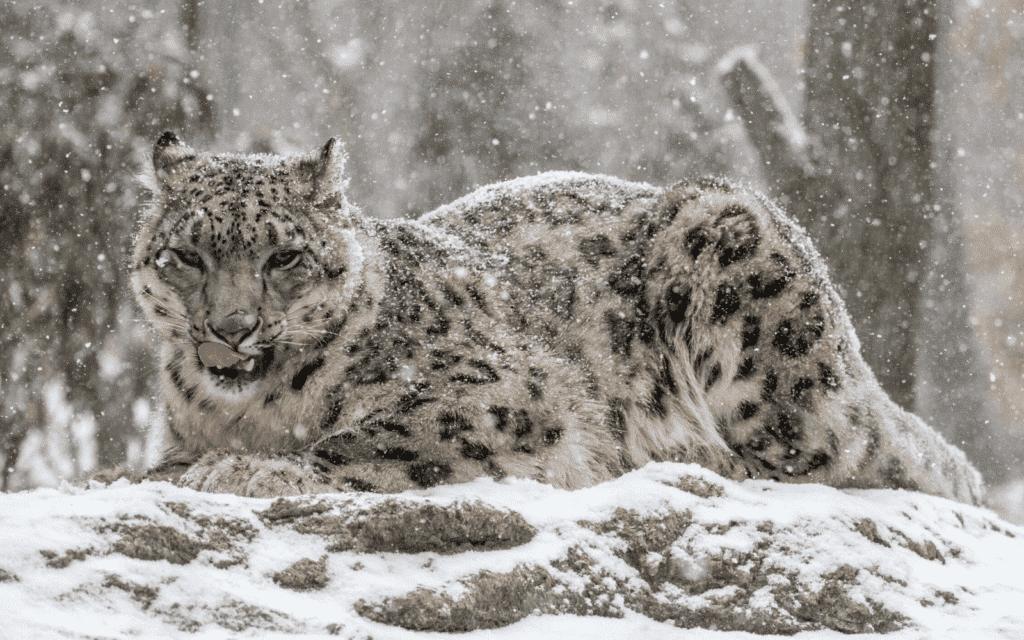
Image © Cristin – stock.adobe.com
The Snow Leopard Sightings Window
Why winter? You might be tempted to ask. There are two reasons.
A snow leopard is almost supernaturally good at disappearing. To tip the odds, even a tiny little bit, we have to be smart and practical.
In theory, the less fortunate animals on the food chain make it down to the valley to graze on lower pastures during the winter months. The snow leopard then follows down the trails for a relatively easy hunt at dawn and dusk.

Image © kwadrat70– stock.adobe.com
Where we Court Snow Leopard
The grey ghost is solitary, elusive, and each cat will cover up to 621 miles 2 (1000 km 2). While it has been seen in countries throughout Central Asia, Ladakh in northern India is the most secure location for a responsible snow leopard trek.
Ladakh
The highest plateau of Jammu and Kashmir is a cold desert that is called home by a surprising number of wildlife species. While the state has a Muslim majority, the ancient kingdom of Ladakh is a Buddhist enclave known as ‘Little Tibet’.
Hemis National Park
Home to over 200 snow leopards concentrated in the Rumbak catchment area where they feast on prey like Great Tibetan sheep, blue sheep, and Ladakhi Urial. No vehicles are allowed inside the park.
Other wildlife includes:
Ladakhi Urial, mountain weasel, Himalayan mouse hare, Himalayan marmot, Asiatic Ibex, Tibetan wolf, the Eurasian brown bear, and the red fox. Also excellent for bird watchers the park includes the golden eagle, Himalayan griffon vulture, lammergeyer vulture, robin accentor, Tickell’s leaf warbler, chukar, black-winged snow finch, Himalayan snowcock and others.
Hemis is pollution and noise-free.
Also see:
The breathtaking Pangong Tso Lake and a plethora of monasteries including the 400-year-old Hemis Monastery. Tribal villages also lie within the park.
Ladakh is also famous for adventure sports with everything from mountaineering, cycling, trekking, and river rafting vying for adrenaline junkies’ attention.
Visit in late winter, February or March.
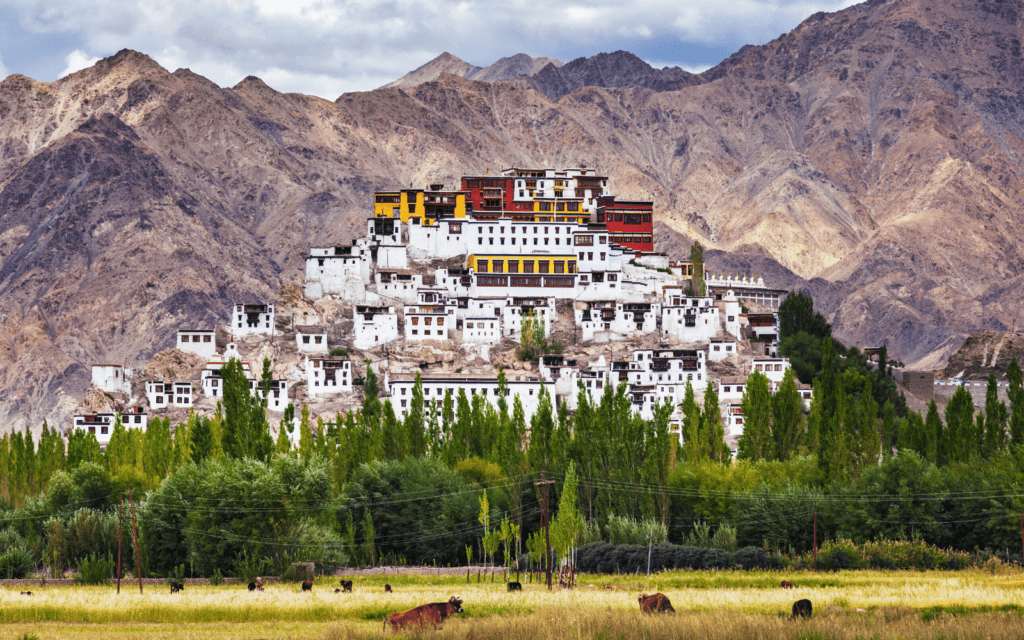
Image ©Dmitry Rukhlenko – stock.adobe.com
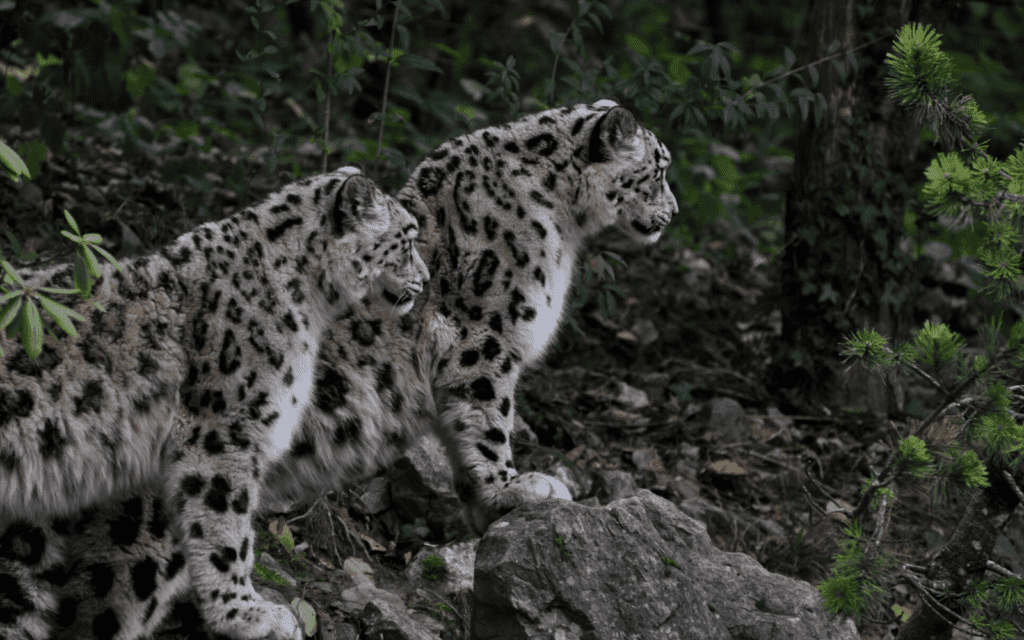 Image © Pascal Mauerhofer – unsplash.com
Image © Pascal Mauerhofer – unsplash.com
Snow Leopard Conservation
Snow leopards are endangered because their bodies are valuable in traditional Asian medicine (tigers are preferred, but as they are so rare snow leopards will do). Humans who live with the snow leopards can make an incredible amount of money if they kill a snow leopard and as they are competing for survival with the cats when they push their livestock into snow leopard habitat, it can make excellent sense for them to hunt the snow leopard.
Rothschild Safaris work with projects that find ways for snow leopards to co-exist with humans and share a habitat. Community-based conservation breaks the cycle of poverty, creates incentives for humans to protect local wildlife and ecosystems and educate future generations.